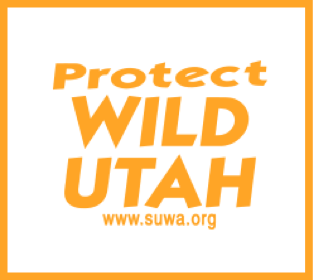|
For immediate release: May 3, 2005 Contacts:
SALT LAKE CITY, UT (May 3, 2005) Despite more than 1,500 unused approved drilling permits in Utah issued between 2001 and April 2005 and millions of acres of already-leased lands not in production, the Bureau of Land Management (BLM) on May 17 will auction for oil and gas development land outside of an area known as the "Parowan Gap" -- a literal treasure trove of Native American rock art -- in southwest Utah, as well as lands proposed for wilderness protection in southeastern Utah in the heart of Utah's redrock country. A coalition of conservation organizations have protested BLM's decision, as has Utah's Poet Laureate, Dr. Kenneth Brewer. “This is exactly what happens when the BLM and the Department of the Interior rush headlong to lease and develop as much public land as they can, as fast as they can nationally important public treasures are put on the auction block without even a backwards glance,” said Stephen Bloch, staff attorney for the Southern Utah Wilderness Alliance.” The auction includes a total of more than 317,000 acres of BLM-managed land, although Dr. Kenneth Brewer, the State of Utah’s Poet Laureate, decried the decision to lease the Parowan Gap in a letter to the BLM: “Personally, I consider Parowan Gap to be an ancient Art Gallery and worthy of the same respect and protection that we, as Utahns, would give to any Art Gallery or Museum. I do not believe that most Utahns would even consider searching for oil and gas in the immediate vicinity of any of our galleries or museums.” (To read the complete text of Dr. Brewer’s letter, see link below). “There are ways to find balance between environmental protections and gas development, but drilling sensitive lands like these is short-sighted,” said Suzanne Jones of The Wilderness Society. “The oil and gas companies and BLM need to take a more prudent approach.” The sale also includes several parcels of land that have been proposed for wilderness protection because of their unspoiled nature along the west and south slope of Utah’s rugged and remote Book Cliffs and in the Monument Canyon proposed wilderness units in the heart of Utah’s redrock country. Utah, like most Western states, has a surplus of BLM lands that have been leased for oil and gas development but are not in production, as well as a surplus of applications for permit to drill. According to BLM figures, at the end of fiscal year 2003, just under 4 million acres of Utah BLM lands were leased, but less than 905,000 were in production. Likewise, according to Utah Division of Oil, Gas, and Mining (UDOGM) statistics, between January 2001 and December 2004, UDOGM had approved 3,448 permits to drill oil and gas wells, but in this same period only 2,152 wells were been drilled, leaving a surplus of 1,296 unused drill permits. “The BLM has sold off so much of our public lands that the oil and gas industry can't keep up with the drilling,” said Sharon Buccino, senior attorney with NRDC (Natural Resources Defense Council). “There’s no need to sell off what's left of our few remaining special places, like Parowan Gap.” The May 17 sale in Utah follows a series of recent contentious lease sales in both Colorado and Utah that have threatened the public lands adjacent to Dinosaur National Monument, Hovenweep National Monument, as well as tens of thousands of acres of wilderness-quality lands. The conservation coalition is comprised of the Southern Utah Wilderness Alliance, the Natural Resources Defense Council, The Wilderness Society, the Sierra Club, and the Grand Canyon Trust. The coalition has called on Utah BLM State Director Sally Wisely not to lease these sensitive lands. Related Documents: |
|
|

 Southern Utah Wilderness Alliance
Southern Utah Wilderness Alliance
Protecting Utah's Redrock Country
